For my first Sunday walk of 2022 it was bright and dry, but quite cold. (I should have been out last week, but missed it because I hadn’t put it in my diary!) We decided to keep it simple and go to Birkenhead Park.
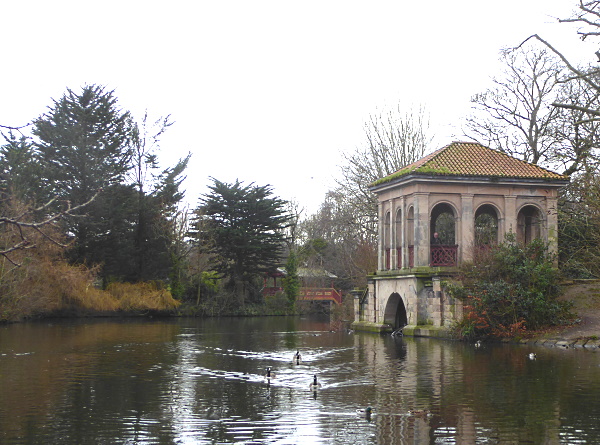
The lake had the usual Mallards, Canada Geese, Mute Swans, Coots and Moorhens, but also three Tufted Ducks, a male and two females. A sign on the railings urged people not to hand-feed or touch the waterfowl and if a dead bird was found, to tell the Visitors’ Centre or ring DEFRA. Sounds like bird flu control measures to me. Two or three weeks ago John saw two dead Mute Swans in Walton Hall Park and reported them. However the Swans here were fine, with two big cygnets feeding peacefully under a Weeping Willow.

There were plenty of Magpies, Wood Pigeons and Feral Pigeons looking out for free food, and also lots of cheeky Grey Squirrels. A Blackbird was almost submerged as it foraged in deep leaf litter in a flowerbed. They love rummaging under dead leaves, and happily throw them about if they can.
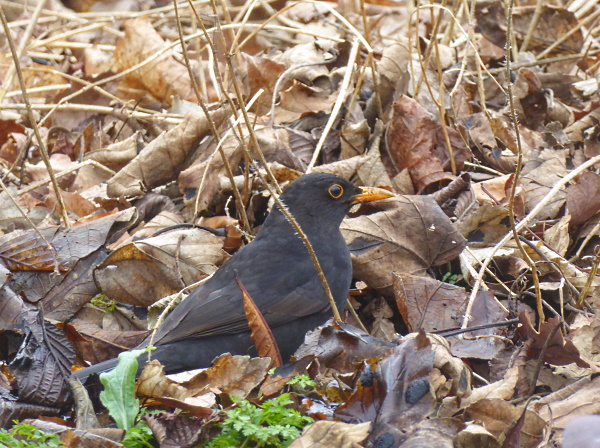
About 50 yards north of the Swiss Bridge we spotted a mystery. A branch shooting from the base of a scruffy lakeside tree bore a coating of woolly stuff like fungus or insect webs. The tree may have been a brown-barked Poplar or an Alder, it was hard to tell, but the woolly stuff was new to us. Anyone seen it before?

The sun came out and the gulls congregated at the top of a Monterey Cypress to catch the warmth.
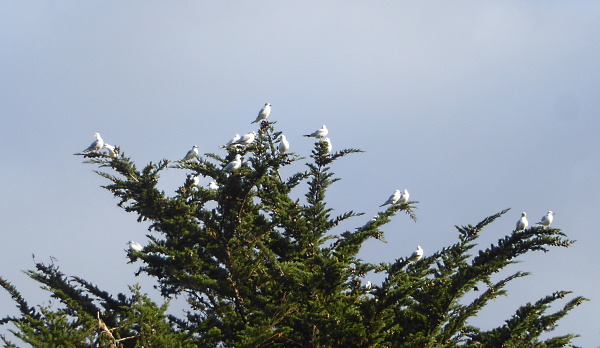
Near the Rockery, high in a tree by the side of the lake, we came across our Corpse of the Day, a dead bird dangling like a gibbetted outlaw. You can just see some fishing line angling off to its left, so the poor creature seems to have been caught in discarded tackle. It’s hard to make out what it was, but it was Crow-sized, perhaps a Magpie.

There was a felled Beech at the eastern end of the lake. It wasn’t storm damage, it had been intentionally cut down. The stump was a good 4 feet in diameter, suggesting the tree was something like 150 years old, and it may have been one of the park’s original trees from 1847. Many of the cut sections had dark hearts, so it looks like it was diseased. The experts on the Facebook group “Trees of Britain and Ireland” suggest it might have had Brittle Cinder fungus Kretzschmaria deusta, which causes a soft rot and makes the tree dangerously likely to fall. Various bracket fungi were also suggested. Looks like a good decision by the park managers in any case.
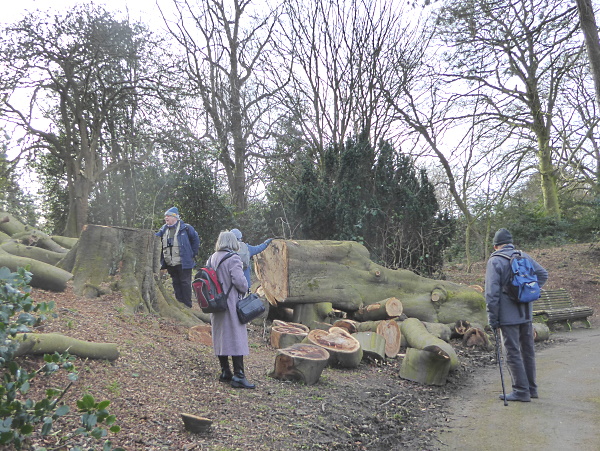
There were vey few flowers about, just the winter-flowering Laurustinus and Gorse, with a few Daisies in the grass around the Visitors’ Centre. There wasn’t much tree activity yet, either, but one Hazel tree was putting on a good show of male catkins (yellow and dangly) and female flowers (smaller, with bright red stigmas sticking out.)

The deciduous trees like oak and beech didn’t fruit well last year, but the conifers seem to have done much better. There were lots of seed clusters on the Monterey Cypress, and a profusion of downward-hanging cones on the Brewer’s Spruce near the huge Town Gates.
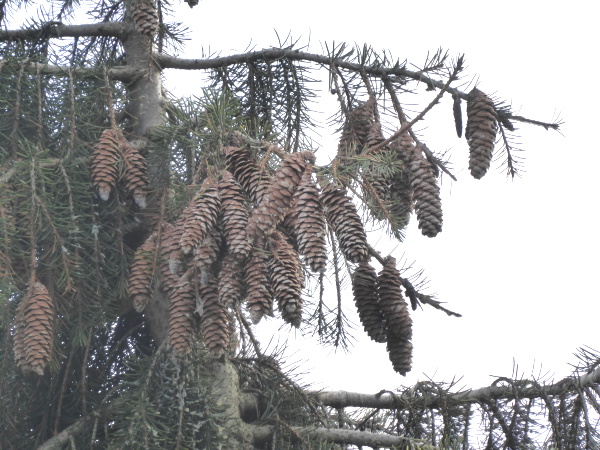
Outside, we looked at a wonderfully ornate old building, erected in 1871. It was Britain’s first purpose-built College for Art and Science and became internationally famous as the Birkenhead College of Art. In 1993 it became the head office of Stanton Marine. We were perplexed by the words on the gates saying “British East India Company”, but it didn’t refer to the historic East India Company but a newer firm, formed in 2004, which took over Stanton Marine. The building is now called The John Laird Centre after the man who originally paid for it as a college.
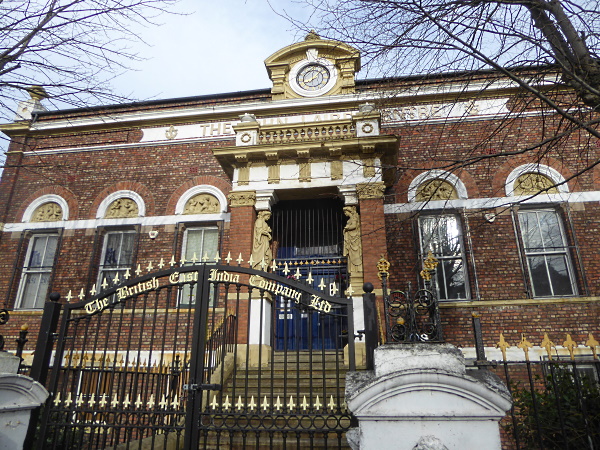
Public transport details: Bus 437 from Sir Thomas Street at 10.10, arriving Park Road North opp Newling Street at 10.25. Returned on bus 437 from Park Road North / Trinity Street at 1.25, arriving Liverpool at 1.35.
